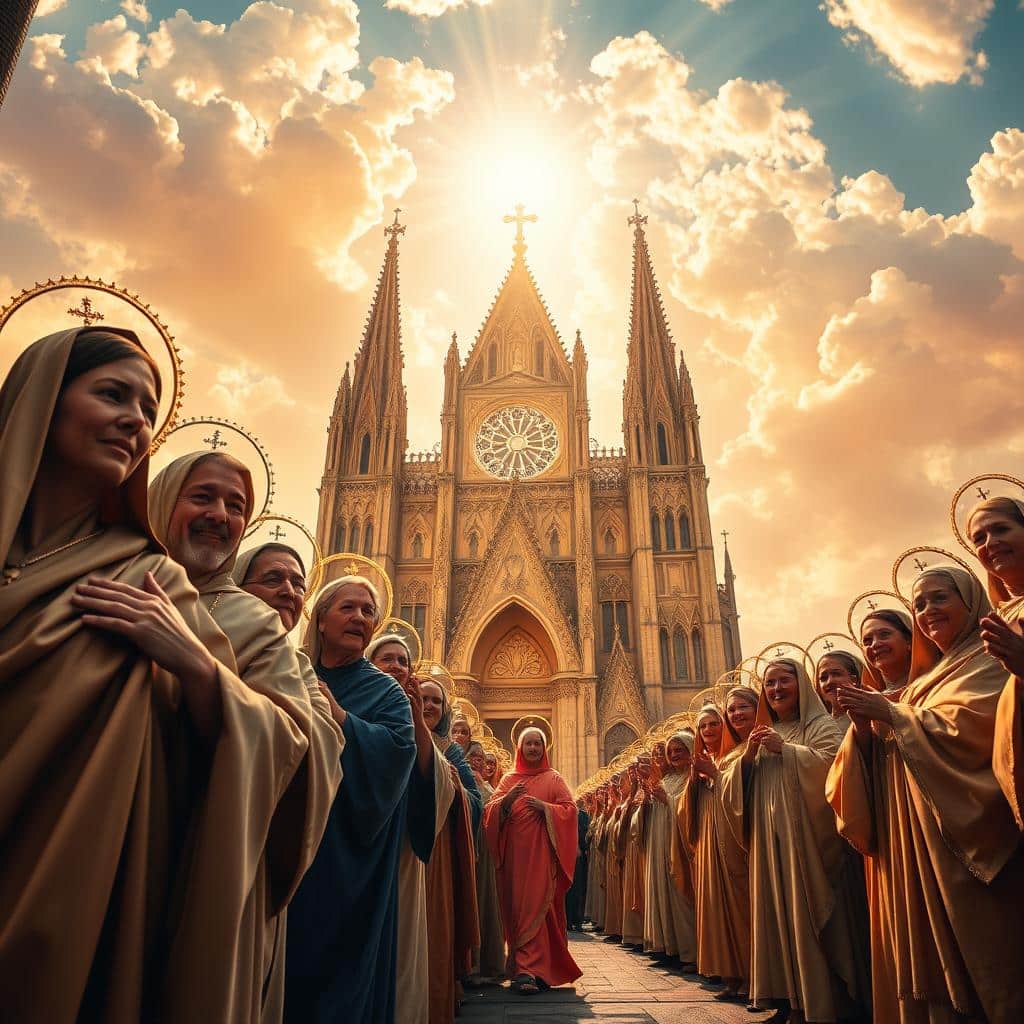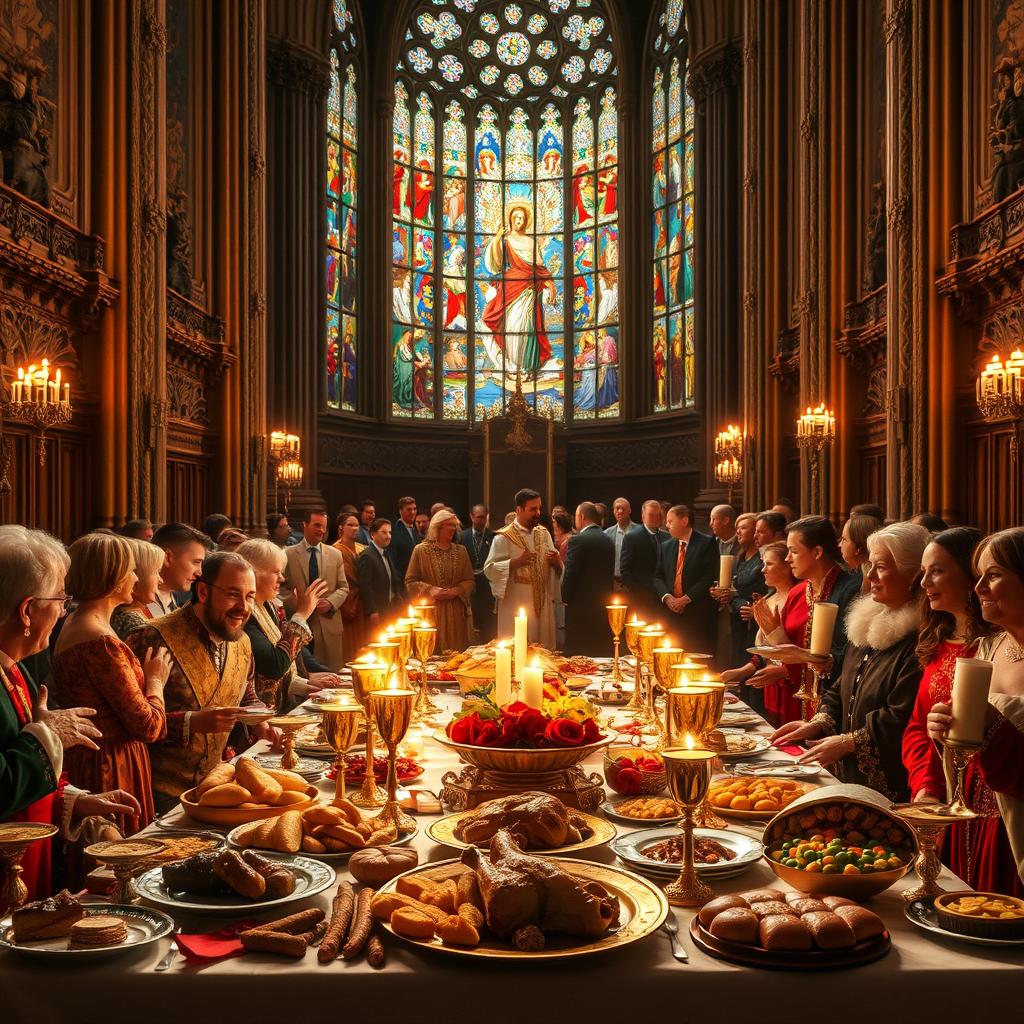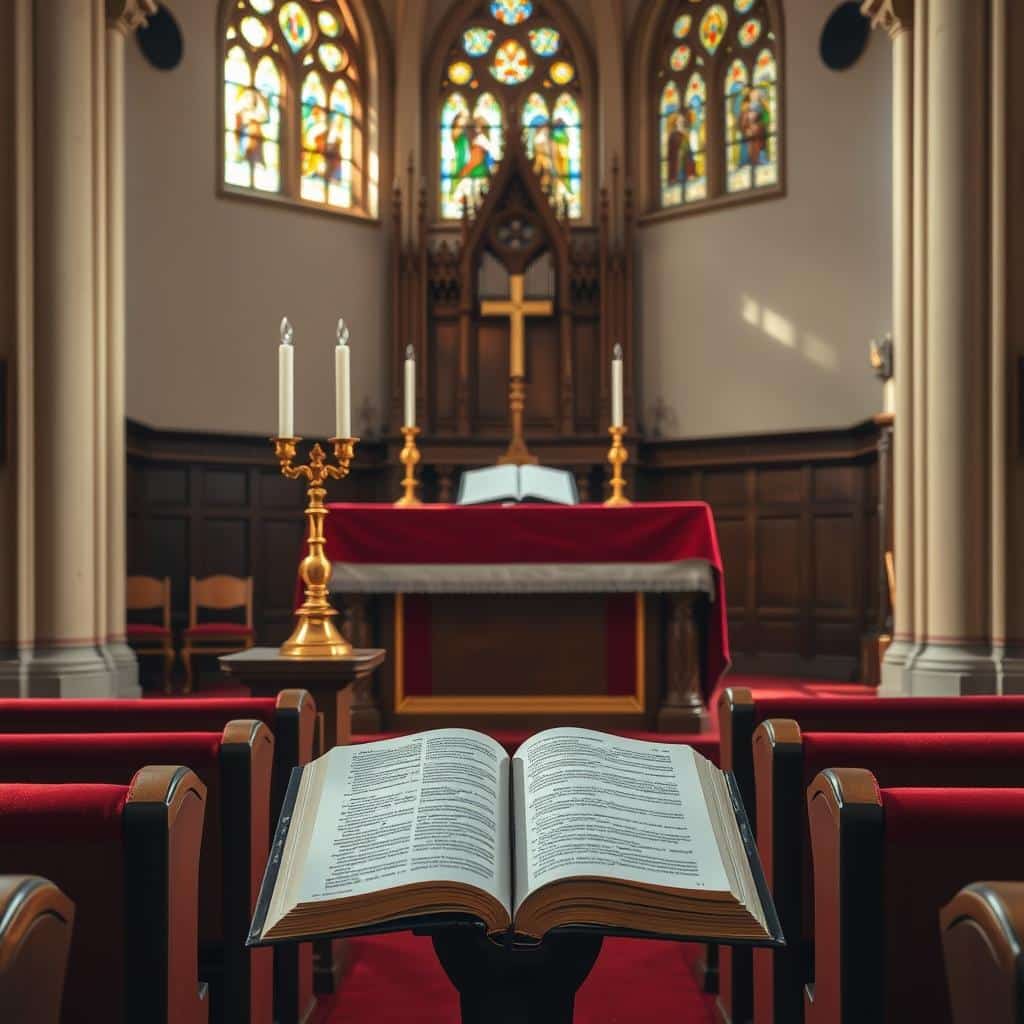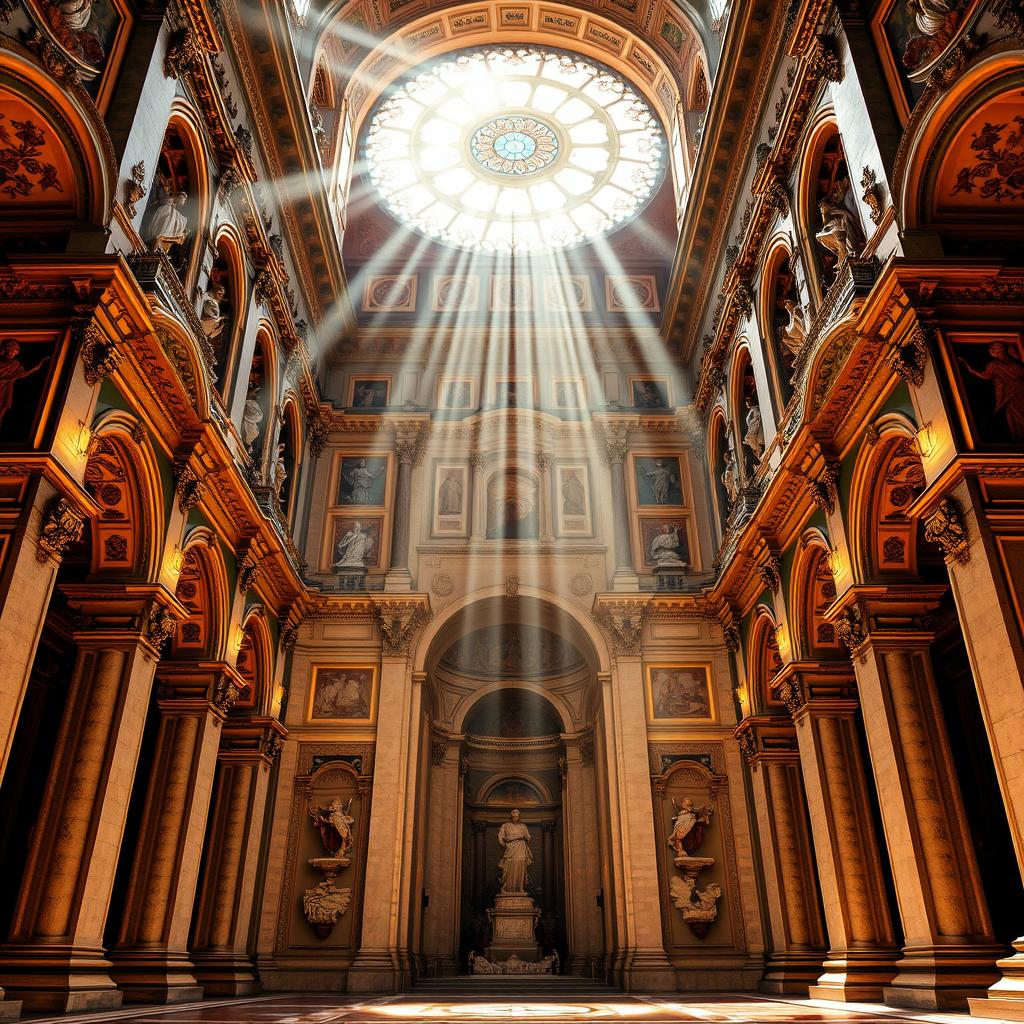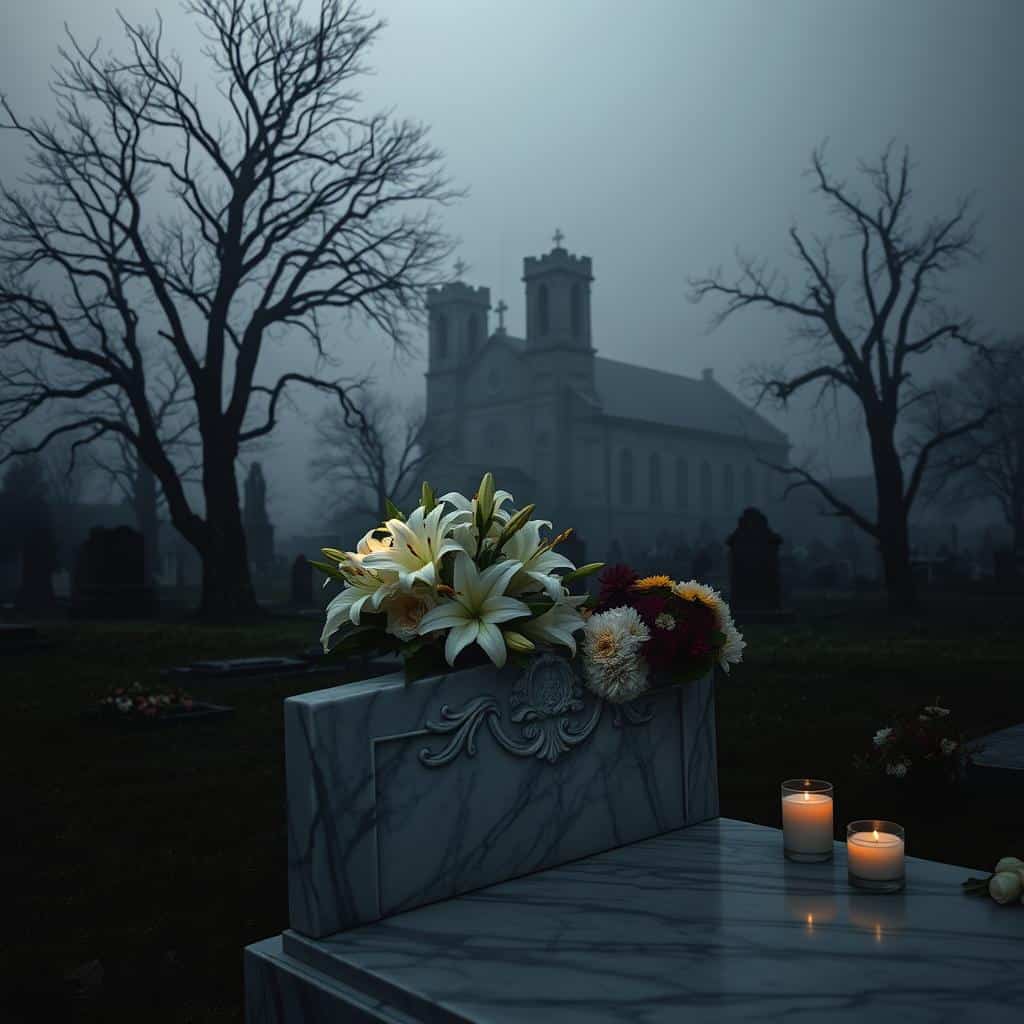A parish cook remembers setting a single candle on a windowsill and thinking how one small flame lit the whole room. They will recall that gentle light when this saints day arrives, and it will guide a quiet walk to the parish for morning prayer.
This Solemnity of All Saints marks a special moment in the liturgical year. It will lift hearts today and invite believers to trust in God’s faithful love.
The church will name the appointed readings — Revelation 7, Psalm 24, 1 John 3, and Matthew 5 — to shape themes of hope, holiness, and solidarity.
As a celebration, the saints day will join worshipers across time and place. It will call readers to gratitude and to practical acts of mercy that echo the saints’ witness.
Readers will find this article guiding them through history, worship, and simple ways to mark the day with renewed faith.
What the Church Celebrates on All Saints’ Day
Parishes and chapels open their doors so worshipers can celebrate the many witnesses who point to heaven.
The church gathers on this saints day to honor both well-known and hidden saints who now share life with God. The appointed readings — Revelation 7; Psalm 24; 1 John 3; and Matthew 5 — shape the prayers and song for the morning liturgy.
In the Catholic tradition, this is a holy day marked by Mass and, for many, a holy day obligation. Families often visit graves in the days around the feast during Allhallowtide to remember the dead and to pray in gratitude.
Anglican and Lutheran churches preserve the celebration with readings, candlelight, and the calling of names. These practices knit communities together and invite children and adults to see sanctity as attainable by ordinary lives.
“They read the Beatitudes and name the faithful departed, lifting prayers that praise God’s victory and promise.”
Honoring saints never replaces worship of God. Instead, it celebrates what grace can do in each believer and renews courage for daily discipleship. Parishes across neighborhoods invite everyone to join this shared day of thanksgiving and hope.
Origins and History: From Early Martyrs to a Universal Feast
From roadside tombs to Rome’s great basilicas, honoring martyrs shaped communal faith in the early centuries.
Early veneration began by the end of the 2nd century, when local Christians gathered at graves and spoke the names of those who died for the faith.
Early veneration in the 2nd–5th centuries
The church first honored martyrs as heroes of witness. Over time, remembrance widened to include figures like Martin of Tours, signaling a move beyond only martyr-witness to a broader idea of holiness.
From Rome to the world: pope boniface and relics
On 13 May 609 or 610, Pope Boniface IV consecrated the Pantheon to the Virgin Mary and all the martyrs, linking relics and place to a yearly anniversary. Relics gave believers a tangible bond to holy lives and deepened gratitude in public worship.
Day November 1 and the popes
Gregory III dedicated an oratory to the relics of all saints, and later Pope Gregory (Gregory IV) promoted November 1 as a feast across the Frankish realms. By the year 800, manuscripts show that Ireland and Northumbria observed the day November 1. Emperor Louis the Pious then made the day a holy day obligation in the empire.
| Period | Key Developments | Impact on the church |
|---|---|---|
| 2nd–5th century | Veneration of martyrs; local tomb commemorations | Established patterns of memory and liturgy |
| 609/610 | Pantheon consecrated to Virgin Mary and martyrs | Linked relics and place to a formal anniversary |
| 8th–9th century | Gregory III & Gregory IV; Louis the Pious supports November 1 | Spread of a unified saints day across Europe |
“The growing feast drew Christians into deeper unity around the memory of martyrs and those who radiated Christ’s love.”
Allhallowtide, Holy Day of Obligation, and the Liturgical Year
Late October ushers in three linked days that shape how communities remember the departed and honor holy witness.
Allhallowtide frames a brief, focused season for prayer, memory, and quiet celebration. It helps people make time to pray at home and at church.
All Hallows’ Eve to All Souls’ Day: timeline and meaning
In Western practice, the observance begins with First Vespers on October 31 and continues through November 1 and November 2. These three days—All Hallows’ Eve, the saints day on November 1, and souls day on November 2—form a single liturgical arc.
Many Christians visit cemeteries during these days. They bring flowers and candles and say simple prayers for the dead. Such practices turn ordinary time into a season of remembrance and hope.
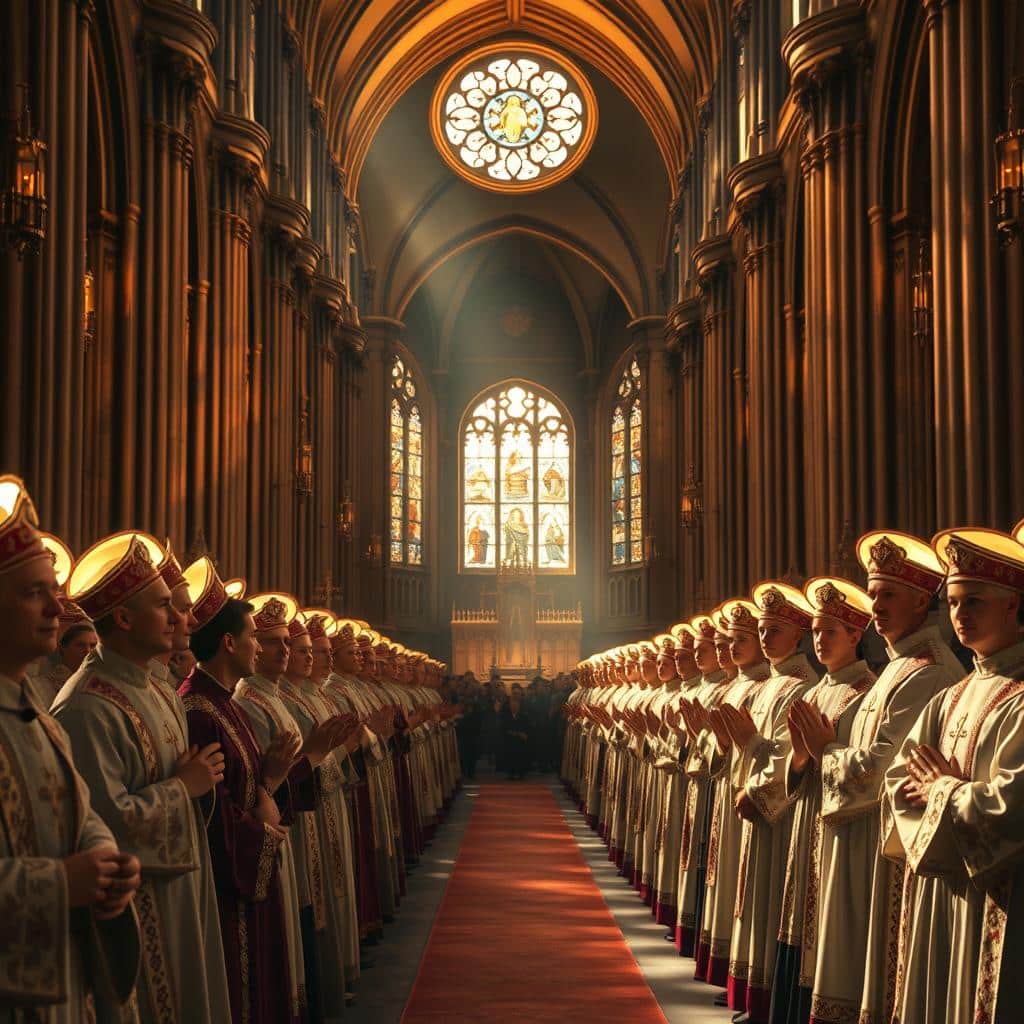
Observed by churches today: Catholic, Anglican, Lutheran, and others in the United States
The Catholic Church in the United States often treats November 1 as a holy day, with a possible day obligation depending on the year and bishops’ directives.
Anglican and Lutheran parishes keep the three-day rhythm with special services, music, Scripture, and the naming of the departed. These services bind families and neighbors in a shared spirit of gratitude.
| Day | Main practices | Typical observers |
|---|---|---|
| October 31 (Vespers) | Evening prayer, vigils, preparation | Parishes, families, youth groups |
| November 1 (saints day) | Mass or service, readings, candles | Catholic, Anglican, Lutheran churches |
| November 2 (souls day) | Prayers for the dead, cemetery visits | Families, funerary ministries, communities |
“These days invite the faithful to remember loved ones and to live hope in the face of loss.”
Scripture Readings for the Solemnity of All Saints
The appointed readings gather the church around a shared vision of heaven and mercy.
Revelation 7:2-4, 9-14 shows a countless assembly in white robes, holding palms in their hands. They give glory and sing that salvation comes from God and the Lamb. This image names the saints as a diverse people, washed and renewed by love.
Psalm 24:1-6 answers like a simple prayer: “This is the people that longs to see your face.” It invites worship that seeks God’s presence and praise on this holy day.
1 John 3:1-3 declares believers are children of God now and promises purification in hope. That promise shapes daily life and steady trust.
Matthew 5:1-12a unfolds the Beatitudes. Jesus maps a path to true happiness and the Kingdom, blessing the meek, merciful, pure in heart, and peacemakers.
“Read the Gospel slowly; ask which Beatitude speaks today, and carry that word into conversations and decisions.”
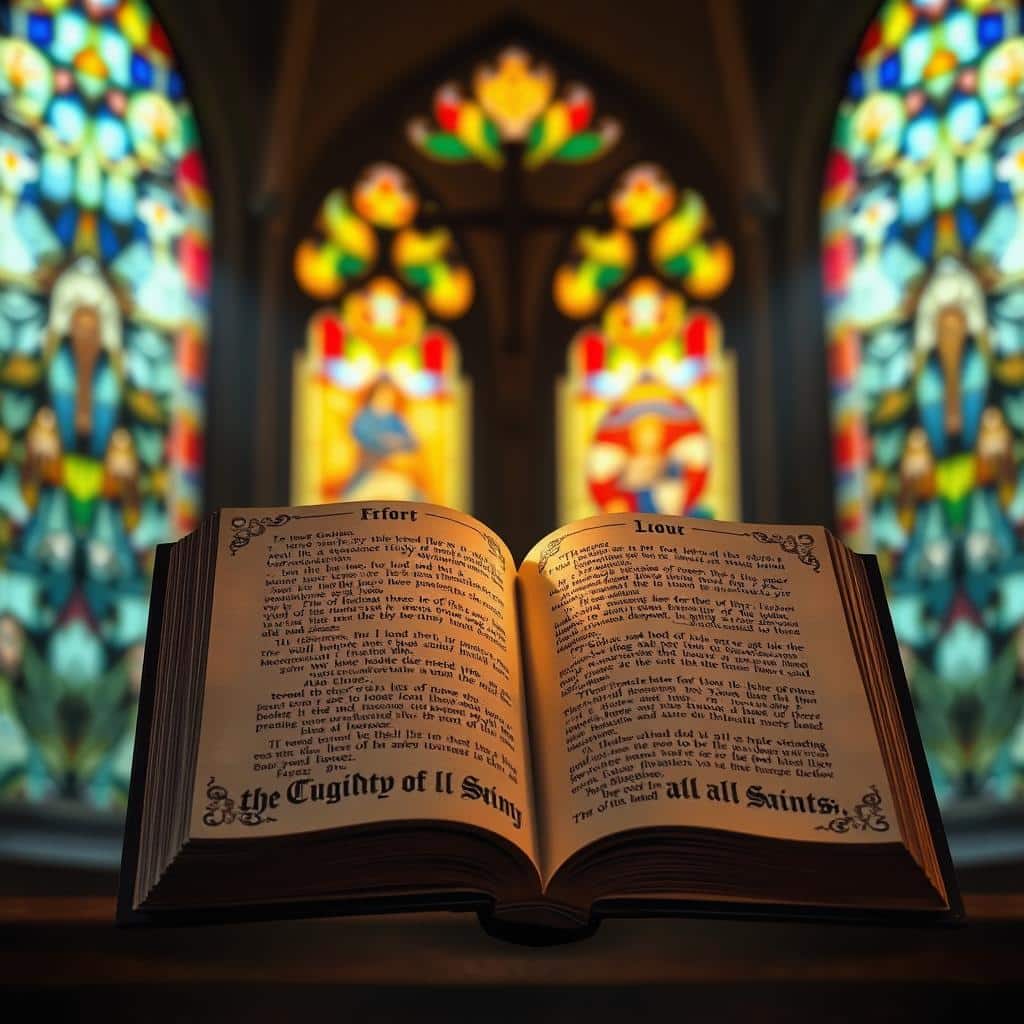
The Solemnity of All Saints: Meaning, Hope, and the Call to Holiness
The readings present a single claim: ordinary life can be shaped by grace into a witness for God’s glory.
Seeing God and sharing glory: the destiny of holy men and women
Revelation 7 and Psalm 24 show a vision of people gathered before God. They point to a destiny where holy men and women share glory in heaven.
1 John 3 insists this is not only future hope but a present identity: believers are God’s children now.
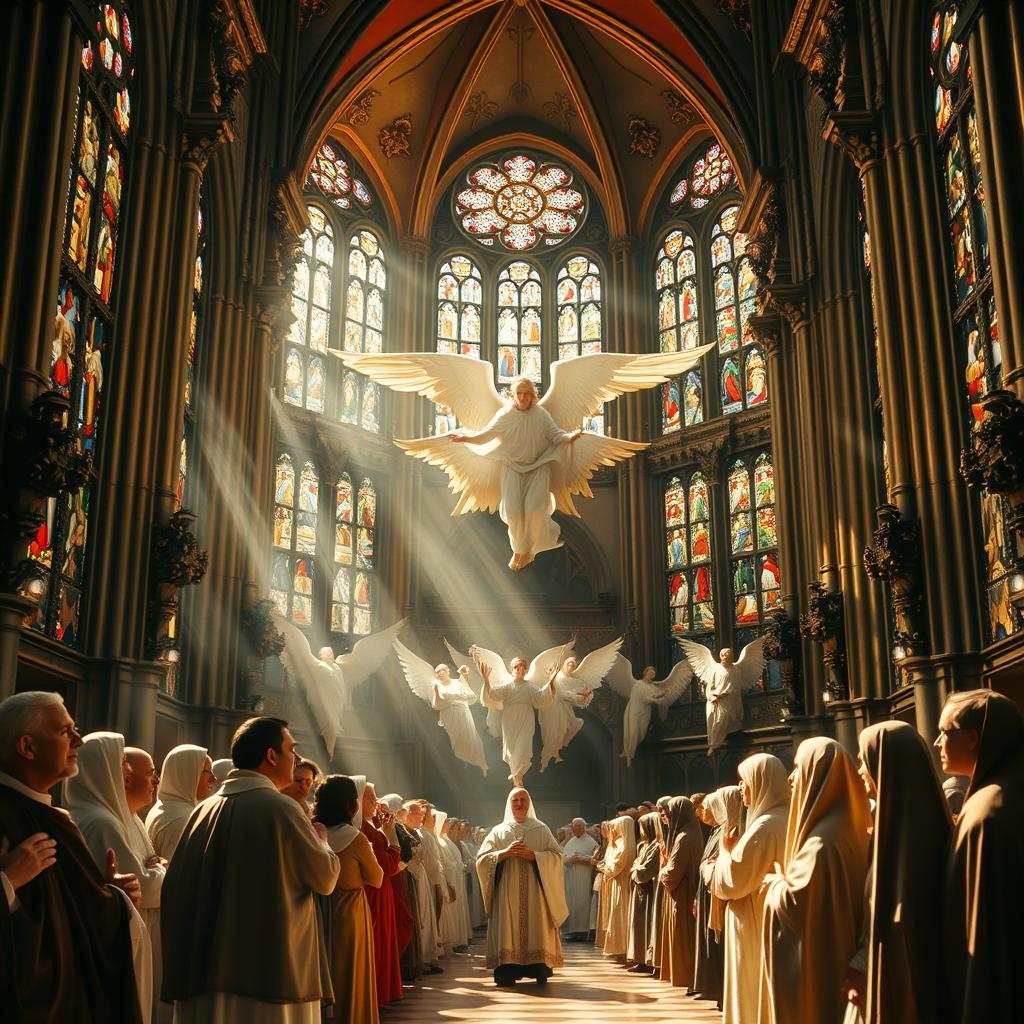
The eight paths of the Beatitudes: why the “for” changes everything
Matthew 5 gives eight ways that begin with blessing and end with promise. The key is the “for” — the promise explains why humility, mercy, and courage lead to lasting happiness.
“Saints next door”: living mercy, purity of heart, and peace today
Holiness shows up in kitchens, classrooms, and neighborhoods. Saints are often sinners who were forgiven and then chose mercy.
“Choose one Beatitude this week; ask for grace and notice how God steadies your steps.”
This feast urges a simple practice: live one path, share one story, and let faith repair and renew life.
Customs and Celebration Today: United States and Worldwide
The calendar brings a day when communities pause to honor lives shaped by faith and service. Parishes and homes will blend public rites with private memory to form a living celebration.
United States practices
In the U.S., Catholics typically attend Mass on the saints day and join prayers that name loved ones. Many families will visit cemeteries during Allhallowtide, placing candles and flowers to renew hope in the resurrection.
Global snapshots
Across the world, local customs will add color and meaning. In France and Belgium chrysanthemums mark graves; in Poland and Croatia processions and liturgies lead communities in song. Others bake sweet breads or observe the day as a public holiday or a quiet, silent day.
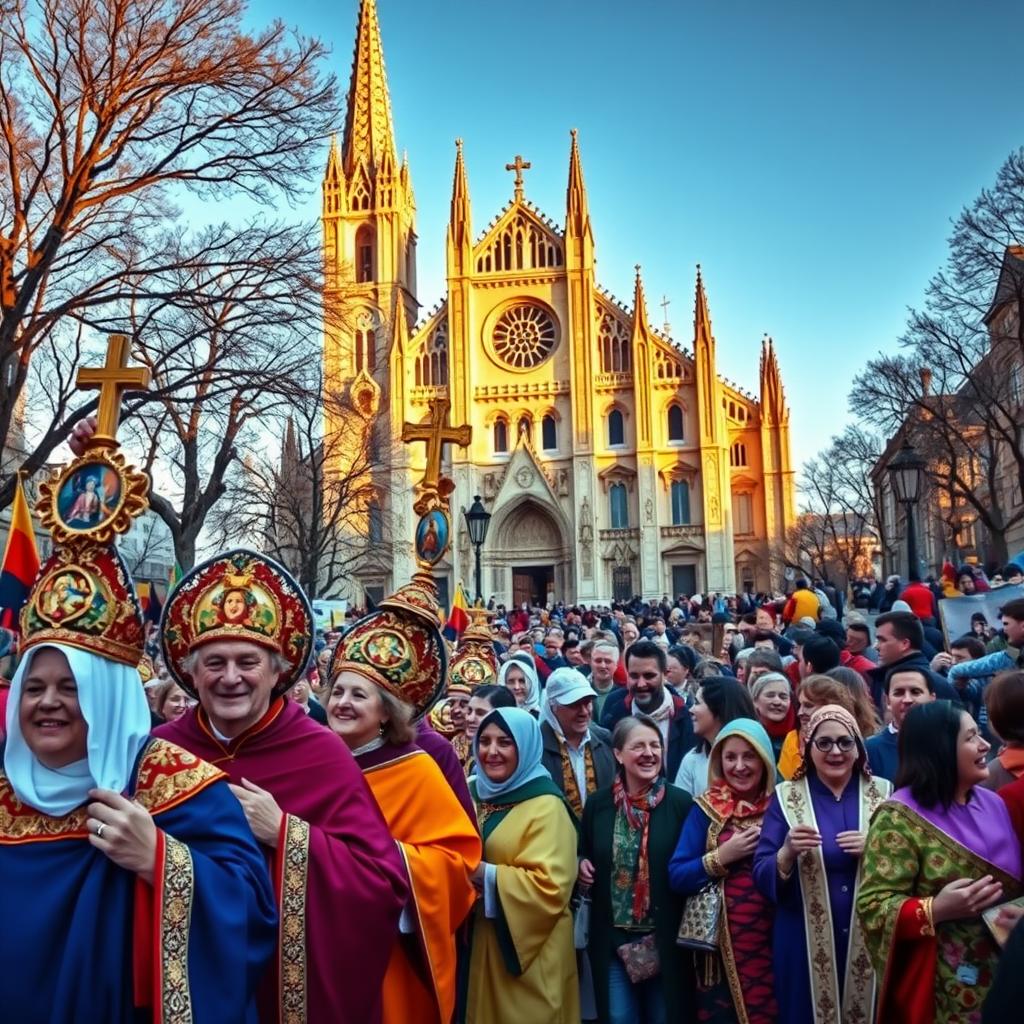
Hymnody of hope
Congregations in English-speaking places often sing “For All the Saints” (tune Sine Nomine by Ralph Vaughan Williams). Hymns and short chants lift the heart and teach children how prayer and memory shape faithful living.
“These customs form a living feast rooted in faith and love, drawing hearts back to God’s promises.”
Practical ways to join: attend Mass, choose a hymn of hope, visit a cemetery, and offer simple prayers. Set aside time this year for small gestures that connect neighbors and families across language and culture.
Praying with the Saints: Practical Ways to Mark the Day
Households can mark the feast with short, steady acts that turn memory into daily care. A few simple habits help worshipers keep the holy day alive at home.
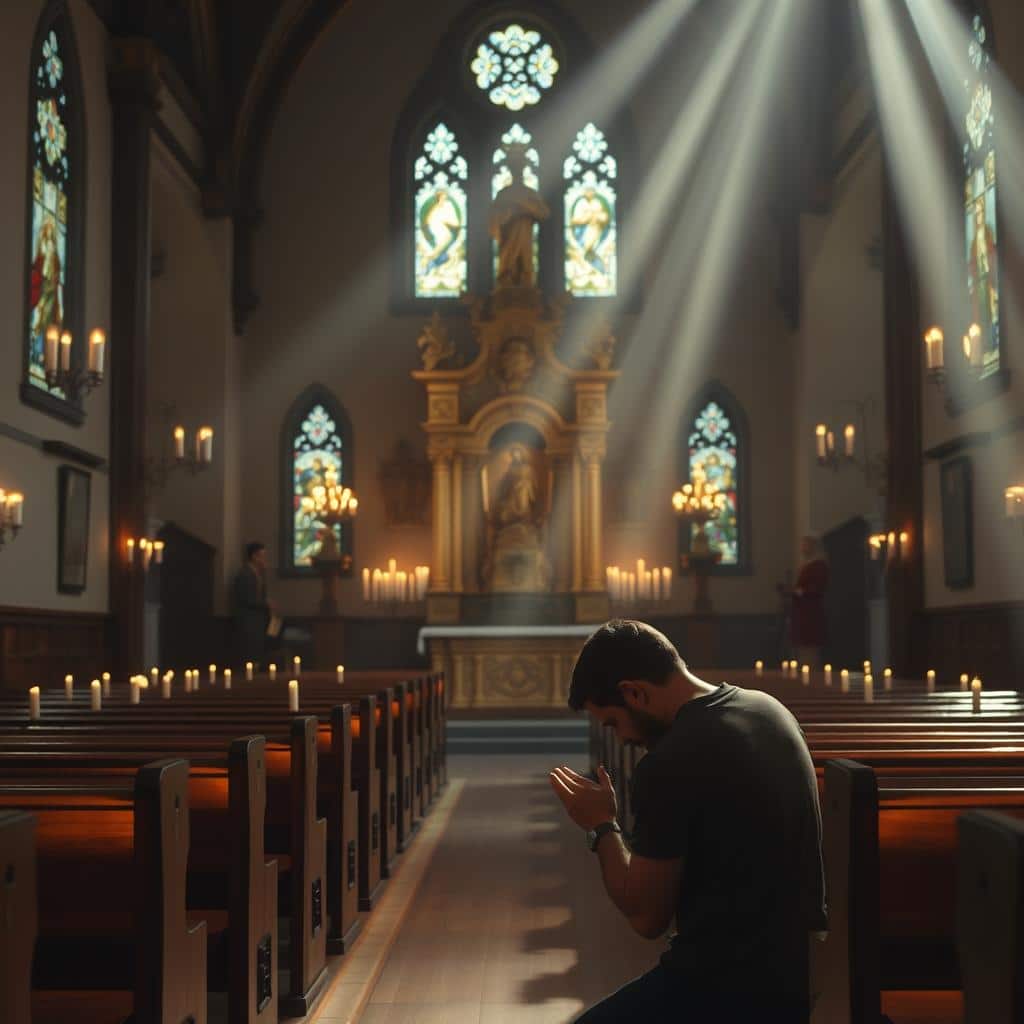
Household prayer and works of mercy
Set a time for prayer each morning or evening. Read one appointed reading. Ask the saints to intercede for specific people and needs.
Honor martyrs and mary martyrs with a candle, a short Scripture reading, and a quiet moment of thanks. Choose one work of mercy—call someone who is alone, bring a meal, or write a note—to make love concrete.
With children and youth
Invite children to hear a short story about a saint. Let them draw the saint’s life or sing a stanza of “For All the Saints.” Teens can journal a Beatitude and note where they see God at work in school and friendships.
| Practice | Purpose | Who |
|---|---|---|
| Short family prayer time | Root the day in gratitude and prayer | Families, children, teens |
| Candle and Scripture for martyrs | Remember witness and thanksgiving | Households, small groups |
| One chosen work | Turn devotion into service | Neighbors, parish volunteers |
“A few minutes of steady prayer each day opens a path for grace to shape ordinary lives.”
Conclusion
As the church marks November 1, communities recall centuries of witness that point toward hope and mercy. The readings—from Revelation 7 and Psalm 24 to 1 John 3 and Matthew 5—show a countless assembly with palms in their hands and a people longing to see God’s face.
This saints day stands as a signpost in the liturgical year. It remembers how pope gregory and gregory iii shaped the day november observance, while pope boniface linked Rome to the virgin mary, martyrs, and relics.
Readers are invited to carry the celebration into souls day with prayer and acts that keep love alive across time. Accept the day obligation where it applies and let this feast saints shape daily life. Give thanks for holy men and women whose lives point the way to heaven, and go forth in service and hope—strong, and steady.
